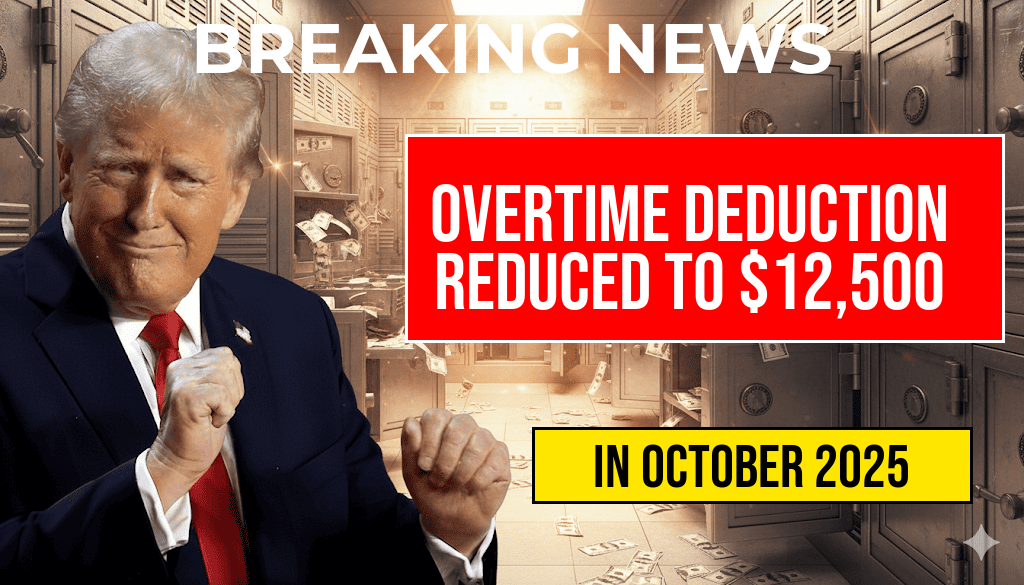The recent adjustment to the tax code means that the tax deduction of four thousand dollars will gradually phase out for taxpayers earning above seventy-five thousand dollars annually. This change, part of broader tax reform efforts, aims to modify how high-income earners benefit from certain deductions, potentially increasing revenue for federal programs. Starting this year, individuals with taxable incomes exceeding the threshold will see their deduction reduce incrementally until it is eliminated entirely for those earning above a certain level. This phased reduction is designed to ensure a smoother transition for taxpayers and to prevent abrupt financial impacts. Understanding how this change impacts different income brackets is crucial for taxpayers planning their finances and for policymakers considering the broader implications of tax policy adjustments.
Details of the Phase-Out Mechanism
The phase-out applies specifically to the standard deduction and certain itemized deductions, depending on the specific tax provision. Under current regulations, taxpayers earning up to seventy-five thousand dollars can claim the full four thousand dollar deduction, with reductions beginning once incomes surpass this threshold. The deduction then diminishes gradually until it reaches zero at a higher income point, which varies based on filing status. This structured reduction aims to limit tax benefits for higher earners, aligning with efforts to promote tax equity.
How the Deduction Phases Out
- For incomes between $75,000 and approximately $85,000, the deduction decreases on a sliding scale.
- Once income exceeds the higher threshold—around $85,000 for singles—no deduction is available.
- Married couples filing jointly have higher phase-out thresholds, typically around $150,000, with the deduction phasing out similarly.
Impact on Different Taxpayers
Taxpayers in the middle-income bracket will experience a gradual reduction in their deductions, which could result in higher taxable income and, consequently, increased tax liability. High-income earners might see a more significant impact, especially those near or above the phase-out threshold. Conversely, lower-income households remain unaffected, maintaining their full deductions. The change is expected to generate additional revenue estimated in the billions annually, part of broader efforts to address federal budget deficits.
Comparative Analysis of Income Brackets
| Filing Status | Full Deduction Income Range | Phase-Out Starts | Deduction Eliminated |
|---|---|---|---|
| Single | up to $75,000 | $75,001 – $85,000 | Above $85,000 |
| Married Filing Jointly | up to $150,000 | $150,001 – $160,000 | Above $160,000 |
| Head of Household | up to $112,500 | $112,501 – $122,500 | Above $122,500 |
Policy Rationale and Broader Implications
Proponents of the phased elimination argue it promotes tax fairness by reducing benefits for higher earners who can afford larger contributions. Critics contend it could discourage savings and investment among middle-income families, potentially impacting economic growth. The change aligns with efforts to simplify the tax code and close loopholes that disproportionately favor wealthier individuals. According to the Wikipedia page on U.S. tax policy, these adjustments reflect ongoing debates about the balance between revenue generation and maintaining incentives for economic activity.
Expert Perspectives
Tax analysts note that, while the phase-out might increase government revenue, it also complicates tax planning for households near the thresholds. Financial advisors recommend reviewing tax strategies and considering year-end planning to optimize deductions before the phase-out fully takes effect. Legislative analysts emphasize that such measures are part of larger efforts to streamline tax brackets and enhance compliance, though the long-term effects remain subject to political negotiations.
Resources for Taxpayers
- IRS Official Website – Guidance on deductions and income thresholds.
- Forbes Tax Section – Expert insights on recent tax reforms.
Frequently Asked Questions
What is the maximum tax deduction available for income up to seventy-five thousand dollars?
The tax deduction available is up to four thousand dollars for individuals earning up to seventy-five thousand dollars annually.
How does the phase-out of the deduction work as income exceeds seventy-five thousand dollars?
Once your income exceeds seventy-five thousand dollars, the tax deduction begins to gradually phase out, reducing the amount you can claim until it is completely eliminated at higher income levels.
At what income level does the phase-out of the deduction become complete?
The phase-out typically reaches 100% once your income exceeds a certain threshold above seventy-five thousand dollars, eliminating the deduction entirely. The specific income level depends on current tax laws.
Can higher-income earners still claim any part of the deduction?
For income levels exceeding the phase-out threshold, higher-income earners generally cannot claim the tax deduction, as it is fully phased out.
Are there any strategies to maximize tax savings despite the phase-out?
Yes, taxpayers can consider tax planning strategies such as timing income, maximizing other deductions, or contributing to retirement accounts to optimize tax savings within the limits of the law.







